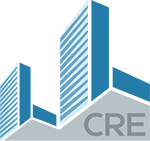Did You Know? Zoning Laws in San Francisco: Tools to Determine What You Can Build or Operate on a Property
How to Research Zoning, Land Use, and Development Rules for Any San Francisco Property
Before cranes rise or leases are signed, zoning laws set the stage. Understand San Francisco’s zoning rules to ensure your business or development is built on solid ground.
San Francisco has some of the most thoroughly documented zoning laws in the country. For commercial real estate investors, business owners, and developers, that’s a major advantage—but understanding how to apply those laws to a specific parcel still takes some work.
In this guide, we walk through how to navigate zoning laws in San Francisco using powerful, publicly available tools. Whether you're planning a new business, considering a property acquisition, or preparing for a redevelopment, this Q&A will help you evaluate what’s allowed—and what might trigger further review.
Why is it important to understand zoning before moving forward with a project or business idea?
Zoning is the legal foundation that determines how land can be used in San Francisco. It dictates whether you can operate a retail storefront, open a restaurant, build a multifamily building, or convert warehouse space into offices. If your proposed use isn’t allowed—or is only allowed conditionally—you may need to go through a lengthy approval process or may not be permitted at all.
Understanding zoning early can save you time, money, and risk. It informs your underwriting assumptions, your permit strategy, and your timeline. And in a complex environment like San Francisco, being proactive about zoning is essential to avoid hitting bureaucratic walls later.
How do I find out a parcel’s zoning in San Francisco?
The best place to start is San Francisco’s Property Information Map (PIM). This interactive GIS tool lets you input any parcel address or Assessor’s Parcel Number and immediately see its zoning designation (e.g., NCD, NC-3, RH-2, MUG, PDR, etc.).
But the PIM goes well beyond zoning:
It identifies the parcel’s zoning district and height/bulk limits
Displays whether the property is in a Special Use District (SUD) or Conservation District
Shows historic resource status
Flags whether the parcel is in an area plan, liquefaction zone, or design review zone
Links to permit history, inspection reports, and recent applications
Shows development impact fees that may apply
It's a vital first stop for any feasibility study.
What if I want to know exactly what types of uses or businesses are allowed?
This is where Symbium Build – Business and Zoning Lookup for San Francisco shines. It allows you to:
Search any parcel and instantly view what land uses are allowed, conditionally allowed, or prohibited
Explore citywide zoning allowances by selecting your business type (e.g., “coffee shop” or “auto repair”)
Click on any land use term for definitions pulled from the Planning Code
See whether your proposed business needs a conditional use permit
It’s a user-friendly alternative to digging through zoning tables manually, especially for inexperienced business owners or first-time developers.
Where can I find the official zoning rules and development standards?
For full legal definitions and development controls—like setbacks, height and bulk limits, FAR, lot coverage, parking requirements, and density—you’ll want to reference the San Francisco Planning Code.
The code is organized by Article and Section, and each zoning district has a table of permitted uses and controls. Be warned: it’s a dense read, and interpreting it often requires experience. But it is the definitive source for regulatory information.
Are there any other rules I should be aware of beyond zoning?
Absolutely. Zoning is just one piece of the puzzle.
For example, San Francisco has several voter-approved propositions and overlay regulations that can impact your project:
Proposition M caps the amount of new office development allowed citywide each year. Even if your zoning permits office use, Prop M may limit what gets approved.
Proposition X protects Production, Distribution, and Repair (PDR) space in the Mission and SoMa. Removing or converting PDR space can trigger replacement requirements or outright prohibition.
Inclusionary housing rules, CEQA review, and design guidelines may also apply depending on your project scope and location.
These policies make it essential to look beyond just the zoning map and ensure you have a team that can guide you through the many bureaucratic obstacles.
Do I need professional help, or can I figure this out myself?
While the tools above empower you to do a solid initial feasibility study, San Francisco’s land use landscape is notoriously complex. Most successful projects involve consultation with a professional—whether it’s a land use attorney, architect, expeditor, or a commercial broker with zoning experience.
Once you've identified a potential site and done your homework, we strongly recommend a professional review. Our team specializes in helping buyers, sellers, and tenants understand what’s possible—and what’s not—before making major commitments. We can also connect you with trusted permitting and design professionals to take your project to the next step.
Follow LL CRE on LinkedIn to Receive the News, Listings, and Guides on Commercial Real Estate
LL CRE provides commercial real estate investment services for the San Francisco Bay Area. Are you looking to sell your property? Want to know the value of your assets in today’s market?
Take advantage of our 60+ years of market knowledge and obtain a free broker opinion of value from us.


